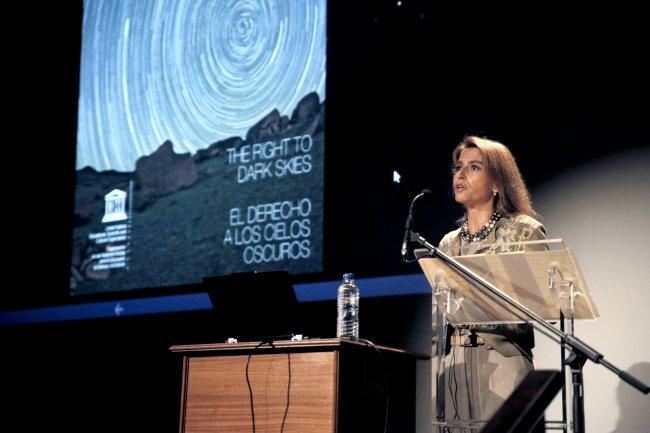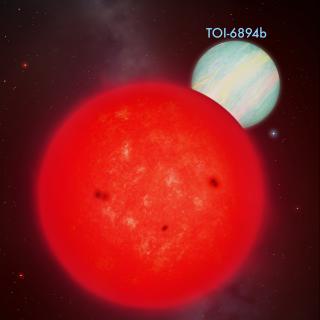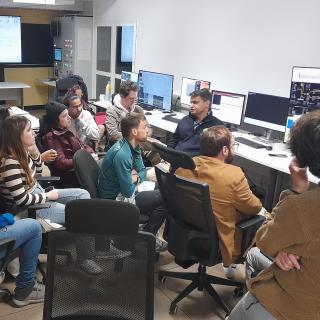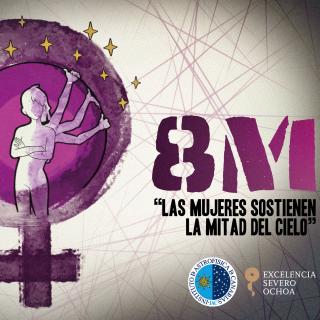The director and representative of the UNESCO office in Mexico, Nuria Sanz, analysed the criteria for World Heritage Sites related to astronomy, and mentioned three ways to meet the challenge of what could happen to astronomy in the next five to ten years. She advised us to look into certain criteria (in particular criteria 6 and 8 which take in cultural and natural properties which could be related to the sky) insisting that it is basic to put all our knowledge about the subject into a much wider agenda. “ This is a subject” she pointed out, “of conservation in an integrated sense. Preserving dark skies means not losing our connection with the universo”.
She commented that it would be necessary to take the conclusions from the “Preserving the Skies” conference to a technical fórum which would then take them on to a political fórum, using the argument that “it is a basic public right to advance in this field, because the windows for observing the sky will tend to be reduced within ten years from now”. According to her it would be very positive if astronomy as a whole were considered a common heritage for humanity, because it is a source of social development for the future. We need to know how to present this at all levels. “Now is the time for international cooperation, and it is important to pull astronomy out of this restricted idea, too minimalist, and to show its true value. Its scientific content could be revolutionary.
“The World Heritage convention is not valid for everything, and the values of astronomy should be claimed in their own right”. She suggested that the law of the Sea, which took 40 years to bring to fuition, could be an inspiration for what could happen to astronomy in the next decades” also she mentioned the need for specialization in communication with the media, arguing in favour of the value of specialized journalists to carry out this task.
Yolanda Perdomo, from the World Tourist Organization of the United Nations (UNWTO) spoke about the promotion of scientific sustainable tourism. “The Global Code of Ethics for Tourism, adopted in 1999 by the General Assembly of UNWTO” she explained “is the key book of instructions which contains a wide set of principles designed to orient the main participants in the development of tourism: governments, the tourist industry, communities, and tourists”. She told us that tourism is growing a the rate of 43 million tourists per year. “The OMT“ she said “works not only with the social networks, but also promotes working groups which act as a starting point to promote the interchange of specialized knowledge. At the present time there are six, and the fourth of these is dedicated to scientific tourism, led by the Starlight Foundation”.
She added that “The programme of our affiliates is looking for collaboration with other institutions to make innovations in this field, and astro-tourism is one of our best options. Tourism is suffering, at the present time, from a lack of leadership, previously carried out by the tour operators who knew what the consumers wanted. But Internet has changed all that. And the main challenge with which we are faced is to know, nowadays, what the consumer really wants”. She concluded that “2017 is the international year for the development of sustainable tourism, and that tourism can be a great opportunity for everybody if it is undertaken in a responsible way".
The Starlight Initiative
Just 10 years ago the 1st International Conference in Defence of the Night Sky and the Right to Observe the Stars” was held on La Palma, as a result of an initiative by the Instituto de Astrofísica de Canarias (IAC), at which the “Starlight Declaration of La Palma” was produced. That declaration contains all the principles and recommendations for a dark sky as a cultural, scientific, environmental, and tourist heritage for humnaity. This was the beginning of the Starlight Initiative as a call to the world to strengthen the importance of the uncontaminated night sky as a factor in the quality of life, helping to spread the direct and indirect technical, economic, and cultural benefits associated with the observation of the stars.
Antonia María Varela, a researcher at the IAC, representing the Starlight Foundation, reminded us of those times which saw the creation of the Starlight Foundation as an organism with a legally approved chárter and with the capacity to act in the management of the full set of principles of the Declaration of La Palma in the world as a whole. This led to a way of unifying the protection of the night sky, outreach in astronomy as culture, the propagation of intelligent public lighting and astronomical tourism via a system of Starlight certificates (for natural Reserves, and tourist destinations, inter alia). This certification can be given to those natural environments which have excellent sky quality and where a commitment is made to take measures to improve the quality of the night sky and for astronomy outreach via sustainable forms of tourism such as astronomical tourism.
The first certificates were issued in 2012, to La Palma and Alqueva, which were the first two Starlight Reservations, and today there are 17 Starlight Tourist Destinations, 10 Starlight Reserves, 35 lodgins, and a further 7 special certificates. A condition sine qua non for obtaining a Starlight certification is a commitment to the Declaration of La Palma on the part of the public and/or private companies which manage the area. Today there are more than 250 of these.
“This anniversary” concluded Varela, “marks a call to all of society to raise our awareness and to take measures on behalf of the right to a starry sky for future generations against the serious threat, not only to science but to humanity as a whole, which is implied by turning off the stars”
Ana Castañeda, technical officer for Tourism of the Cabildo of La Palma gave us a historical run throught the development of astrotourism in La Palma, since the inauguration of the Observatory of the Roque de los Muchachos in 1985, (where visits to this observatory have risen by 30%) until the first certifications of Starlight Reserves in 2012. There is no doubt that the island is a leader in this field, with a number of initiatives, and she gave a set of examples, such as courses, cinema festivals inspired by the stars, concerts, astrophotography competitions, gastronomical experiences, merchandising, and events such as Technarte, Astrofest, STARMUS, the starry walkway in Santa Cruz de la Palma, etc. All of this has had a high impact on the media of communication, “But the most important things” she stressed, “is that the local population has learned the value of looking at the stars”
Salvador Ribas, of the Astronomical Park of Montsec in Catalonia explained how the protection of the sky in this park has contributed to the development and the conservation of rural areas. “Montsec” he explained” is a calciferous range of mountains more than 40km long, in the territory of Catalonia and Aragon, in the north-east of the Iberian Peninsula. The Catalan portion includes some 20 municipalities. This zone showed excellent parameters for the development of acitivites based on astronomy and dark skies. For that reason the Regional Government (Generalitat) of Catalonia promoted the creation and development of the Astronomical Park of Montsec as a tool to help the economic development of the region, which has presented an opportunity to stop the loss of population, and to creat and modernize new tourist installations related to dark skies and astronomical activities. In 2013 more than 1,700 km2 were declared a Starlight Tourist Destination, and part of this zone was converted into a Starlight Reserve. Since 2012 there has been an analysis of the social and economic impact on the zone, and in 2014 a new study was carried out on how the visitors to the Park participate in the local economy and in alternative activities in the area of Montsec, generating 4 euros for each euro of public money spent. “The number of accommodations has doubled in the last decade", he commented, “the population decline in the area has been halted, and it is estimated that around 1.3 million euros of economica activity has been generated in the area by visitors to the Montsec Astronomical Park. All these preliminary results support the idea of an imporant contribution to the development of a rural area created by protecting the dark sky, with the accompanying astronomical activities”
Kai von Schauroth, of the ATHOS astronomical centre on La Palma, presented this amateur astronomical project on the Island. “ATHOS Star Campus, situated in Las Tricias, Garafía, is a new exclusive astrotourist offer aimed specifically at amateur astronomers, astrophotographers, and tourists who are looking to enjoy the best night skies in a European country, using Forefront telescopes, cameras, and other equipment. Our installations are sited at 900m above sea level, offer reasonaby priced accommodation, observation platmorms and a professionally equipped observatory. The telescopes in the high quality range, and the accessories, can be hired for use in situ, or in any other place on the Island”
Susana Malón Giménez, an auditor of Lumínica Ambiental and of Starlight presented the results of a renovation of exterior lighting carried out in the Gúdar-Javalambre Starlight Reserve and Tourist Destination, and in the Trevinca Starlight Tourist Destination, both of them examples of good exterior lighting practice
Fernando Ávila, of the Institute of Astronomy of the UNAM (Mexico) presented the Office of the Law of the Sky of his institution, set up in 2012 to help to protect the exceptionally dark sky of Baja California, the site of the National Astronomical Observatory at San Pedro Mártir. He talked about his experience of the work carried out with local governments and the local community in recent years.
Raising people’s awareness about light pollution is a challenge, and needs active campaigning. “We are looking into a new type of incentive to attract a wider public using games” commented Irene Celino, of the research and consulting organization CEFRIEL, who presented “ Night Knights” an application for classifuying photos from the International Space Station and to raise awareness about light pollution by solving the problems it presents, and quantifying the phenomenon.
Andrea Bertolo, of the Regional Agency for the protection of the Environmente (ARPA) IN Italy, presented the situation of the light pollution and the exterior lighting installations in the Veneto, and specifically the savings in energy achieved, and showed activities, polls, and initiatives carried out from 2010 until now. Among these a key feature is the setting up of a network to monitor the brightness level of the night sky, to measure trends, and to test the efficiency of the regional law.
Previous press releases about "Preserving the Skies" conference:



